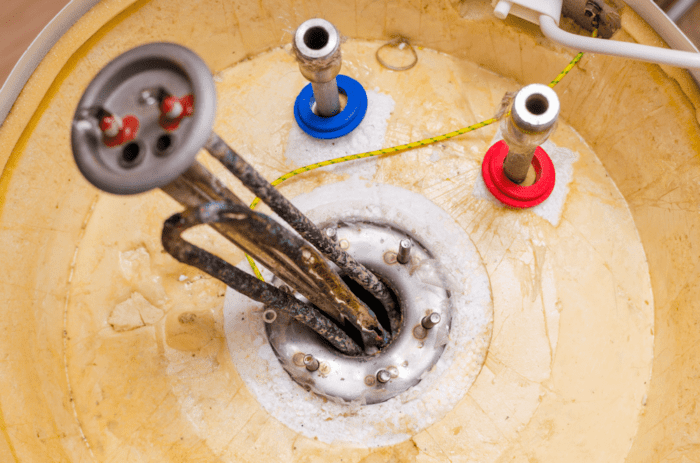
Signs Your Water Heater Is About to Fail
You can avoid the disruption and damage of a failing water heater. Here are four indicators that your water heater may be on its last legs:
1. How old is your water heater?
It’s crucial to know the age of your water heater. Find the age by looking for the serial number on the manufacturer’s sticker on the upper portion of the water heater
The serial number contains the date that the water heater was manufactured. But it won’t look the way a date is normally written. Instead, the serial number will have a date code such as “F051052638”.
F is for the month and F is the sixth letter in the alphabet, so it represents the sixth month, June. Next, the first two digits of the serial number are 05, which represents the year, 2005. So this water heater was made in June 2005. Each manufacturer has a similar date code, and they can vary; check the manufacturer’s website to learn more.
Generally, most water heaters that are more than 10 years old should be considered for replacement. If your water heater is in a location that will not cause damage if there is a leak, you can wait until it develops a leak before replacing it, but that really is not recommended.
If your water heater is in a location that will cause damage to your home, you should strongly consider replacing it after 10 years (or before, if any of the following symptoms occur).
2. Rusty water
If you discover rusty water coming from your water heater and it only comes from the hot side piping in your home, this can be a sign that your water heater is rusting away on the inside and it may begin to leak soon.
But if you have galvanized piping, you may have rusty pipes. A good test to avoid replacing a functioning water heater is to drain a few five-gallon buckets of hot water out of the water heater. By the third bucket, if the water from your heater is still coming out rusty, then most likely the water heater (not the piping) is at fault.
3. Rumbling and noise
As a water heater ages, sediment will build up on the bottom of the tank. As the sediment is heated and reheated, it eventually will harden.
When this happens, you can often hear rumbling or banging sounds coming from the water heater as it is heating up. This is a sign that the water heater is at the end of its useful life.
The layer of hardened sediment means:
- Less efficiency — the heater will have to use more gas or electricity to heat the water.
- More damage — the extra time spent heating the water will cause more wear on the metal tank and lead to more brittle metal that can crack and develop tiny holes. If you start to hear rumbling from your water heater, keep an eye out for any small leaks. If you find one, then it may be time to replace your water heater.
4. Water around the water heater
If you notice moisture around your water, you may have a small leak or a fracture in the tank. As the metal heats, it expands and if there are slight fractures, water may leak from the tank. Once the metal has cooled the inner tank will stop leaking.
However, before replacing your water heater, make sure there are no other leaks coming from either the fittings or connections to the tank. Also, make sure the temperature/pressure overflow pipe is not leaking. If all of the connections and fittings are dry, it may be time to replace the water heater.
If you are concerned about water heater failure or if you discover any of the signs above, contact a plumber or a company that services water heaters.
If you need help with your water heater, give us a call at 630-269-3995

